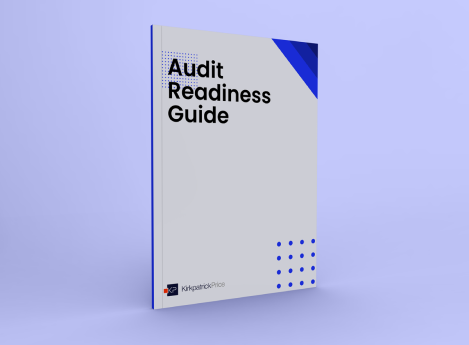
Implementing Internal Controls for SOC 1 Compliance
When an organization pursues SOC 1 compliance, they’ll be tested against the COSO Internal Control – Integrated Framework. This framework is one of the most common frameworks used to design, implement, maintain, and evaluate internal controls.
For an organization to successfully complete a SOC 1 audit, they’ll need to meet the three objectives of internal control, demonstrate that they have the five components of internal control in place and functioning, and implement the 17 COSO principles related to internal control outlined in the framework.
While we’ve already covered how organizations can meet the objectives of internal control, let’s take a look at the five components of COSO and what they mean for SOC 1 compliance.
What is the COSO Framework?
The COSO Framework is an industry-standard model for evaluating and implementing internal control systems within organizations. COSO stands for the Committee of Sponsoring Organizations of the Treadway Commission, a private-sector organization that develops frameworks and guidance on organizational governance, internal controls, risk management, and financial reporting.
The framework gives organizations a structure for managing risks and ensuring the reliability of financial reporting. It emphasizes the importance of internal controls, the procedures and processes organizations should use to safeguard assets, and improves the accuracy of financial records.
The 5 Components of COSO: C.R.I.M.E.
The five components of COSO – control environment, risk assessment, information and communication, monitoring activities, and existing control activities – are often referred to by the acronym C.R.I.M.E. To get the most out of your SOC 1 compliance, you need to understand what each of these components includes.
Control Environment
How has management implemented policies and procedures that guide the organization? What kind of tone has management set in the organization so that everyone knows that they are supposed to make sure that your controls are operating effectively and are achieving the results that they expect?
Risk Assessment
How does your organization assess risk in order to identify the things that threaten the achievement of their objectives?
Information and Communication
How does management communicate to their internal and external users what is expected of them? How do you make sure that you receive acknowledgement from those people that they understand what you’re asking them to do?
Monitoring Activities
How does management oversee the entire organization’s functionality? How do you identify when things aren’t working correctly and correct those deficiencies as quickly as possible?
Existing Control Activities
What are the controls that you currently have in place? Were they in place and operating effectively over a period of time?
Who Uses the COSO Framework?
The COSO Framework is primarily used by two parties: organizations looking to improve internal controls and auditors assessing those controls.
Internal Control Enhancement
Businesses adopt the COSO Framework as a strategic tool to enhance and maintain effective internal control systems. The framework provides a comprehensive guide to creating policies, processes, and procedures to manage risks and ensure accurate financial reporting.
For example, the COSO Framework helps businesses establish a robust control environment by fostering an organizational culture emphasizing integrity, ethical values, and the importance of internal controls.
By following each of the five COSO: C.R.I.M.E. components and 17 COSO principles, businesses and other organizations can systematically implement controls that will help them successfully complete audits, including SOC 1 audits.
Internal Control Audits
Auditors use the COSO Framework as a structured benchmark to assess the design and operational effectiveness of an organization’s internal controls. It guides the auditor’s assessment of the reliability of financial reporting and other factors governed by industry standards and regulations.
What Is the Relationship Between the COSO Framework and SOC 1 Audits?
SOC 1 is an audit focused on a service organization’s controls relevant to its clients’ financial reporting. It is governed by the Statement on Standards for Attestation Engagements (SSAE) No. 18.
SOC 1 is an essential report for service organizations that manage financial transactions or related client data. A successfully completed audit gives businesses confidence that a service provider has effective controls in place.
When a service organization undergoes a SOC 1 audit, the auditors use the COSO Internal Control Framework to evaluate the effectiveness of its internal controls. They assess whether the controls are suitably designed, properly implemented, and effectively operated to safeguard the accuracy and integrity of financial data.
What Should Organizations Do When They Discover Non-Compliance with One or More COSO Components?
It’s crucial to act swiftly and methodically when your organization finds it is not compliant with COSO Framework components. The first step is a detailed assessment to identify the areas of non-compliance and understand the underlying reasons.
Once you have identified areas of non-compliance, you should:
- Develop a Remediation Plan: Create a detailed plan outlining corrective actions, resource allocation, responsibilities, and timelines. The plan should prioritize actions based on impact and urgency.
- Implement Changes: Execute the remediation plan, which may involve revising policies, enhancing training, introducing new control activities, or upgrading systems. Ensure that these changes are well-managed and that staff are adequately supported.
- Monitor and Document: Continuously monitor the effectiveness of changes and maintain detailed documentation throughout the process for audit and compliance purposes.
- Seek External Expertise if Needed: If the compliance issues are complex, consider consulting COSO Framework or SOC 1 experts for specialized guidance and insights.
Partner with KirkpatrickPrice on Your Compliance Journey
Security and compliance are intimidating topics whether you’ve been through a hundred audits before or if this is your first one. That’s why we’re here to help. Security and compliance don’t have to remain a mystery. When you work with an auditing firm that cares about your well-being and success, audits won’t seem as scary anymore. If you are ready to start your audit or want to learn more about the COSO Internal Control – Integrated Framework, connect with one of our experts today.




